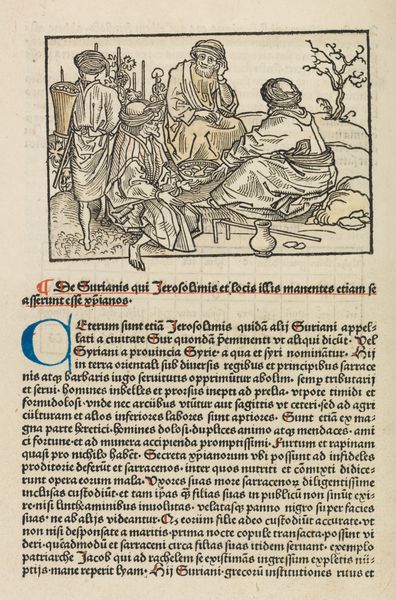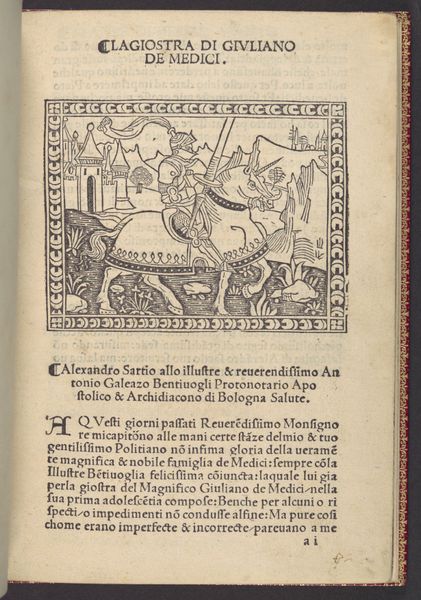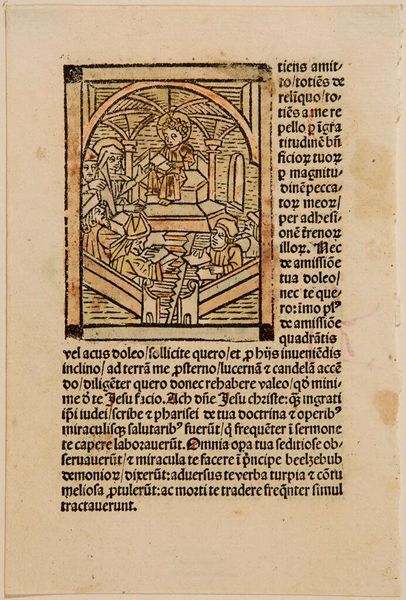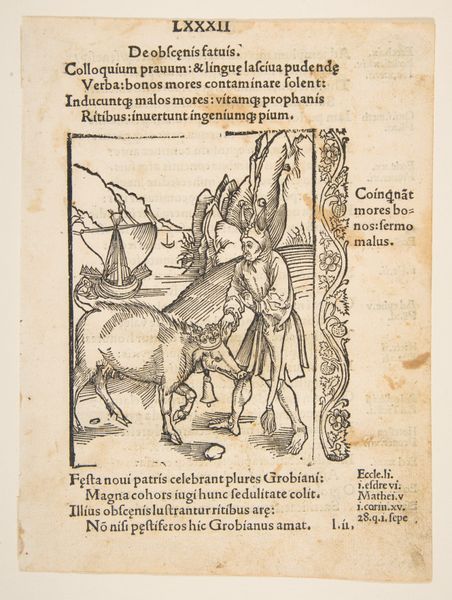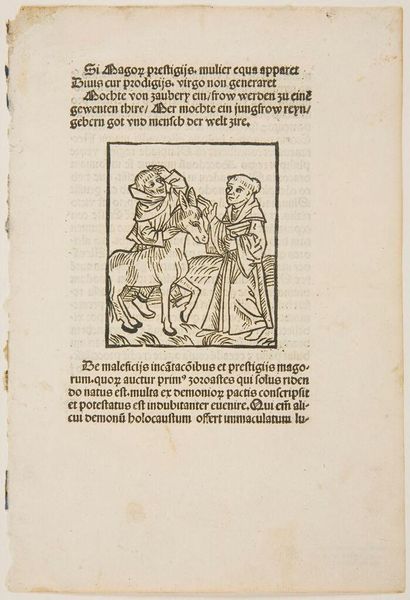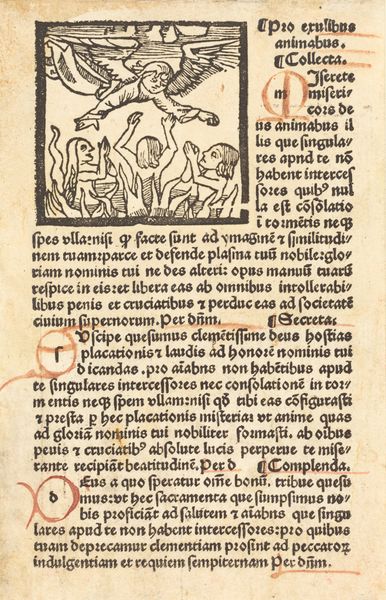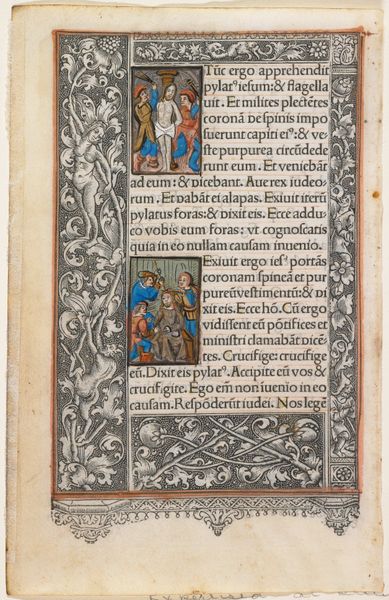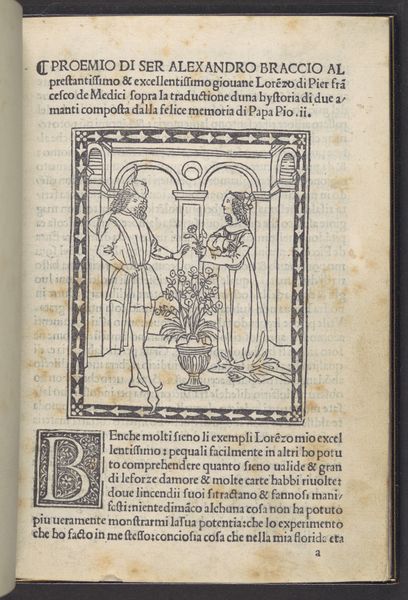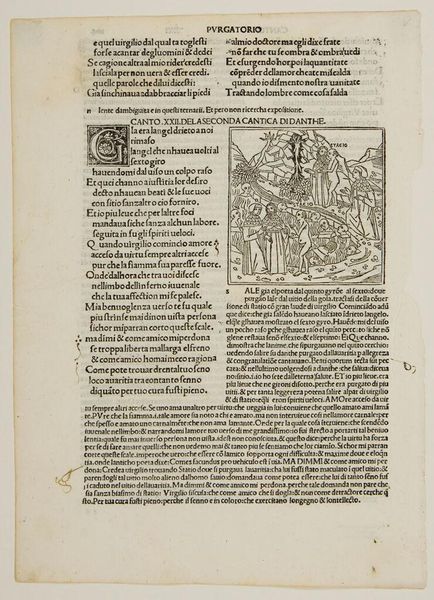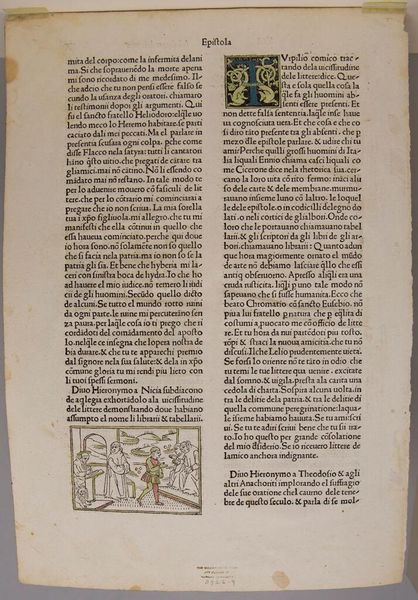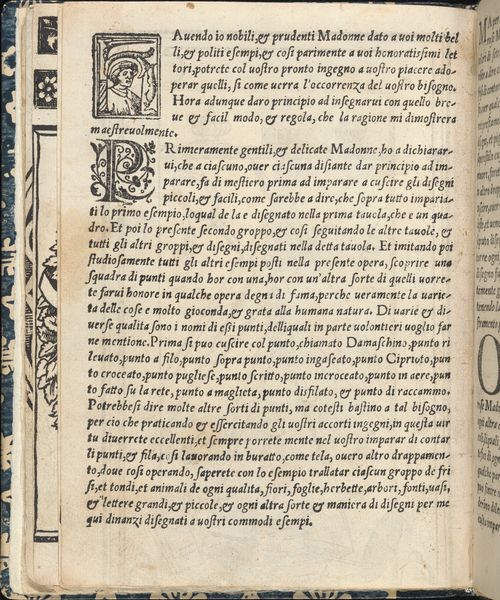
drawing, print, paper, ink, woodcut
#
drawing
#
narrative-art
#
animal
# print
#
book
#
hand drawn type
#
landscape
#
figuration
#
paper
#
11_renaissance
#
paragraph style
#
ink
#
woodcut
#
men
#
italian-renaissance
Dimensions: Overall: 7 11/16 x 5 5/16 x 5/16 in. (19.5 x 13.5 x 0.8 cm)
Copyright: Public Domain
Editor: Here we have a page from "Fior di virtu hystoriato" made by Gianstephano di Carlo da Pavia in 1519. It's an ink and woodcut print on paper and is really striking. I'm immediately drawn to the image at the top half, above the Italian text; it feels both familiar and somehow distant. How do you interpret this work? Curator: This image immediately speaks to the medieval bestiaries and emblem books, which assigned moral and symbolic meanings to animals. Notice the hunting scene depicted, seemingly secondary to the two standing hunters. They witness an ermine or other animal in a trap... Editor: A trap, or burrow. It’s not so clear. Curator: Perhaps. That ambiguity is important, precisely. In these books, the ermine, known for its pure white coat, often symbolized purity and virtue, hence, "Fior di virtu." The choice of trapping it implies something more. Editor: Could it represent a conflict then, between man and nature? Or maybe how human virtues can be compromised? Curator: Precisely. And see how that narrative element is intensified by the Italian text? This isn't just a picture; it’s a symbolic story that’s supposed to act like a moral instruction manual. The cultural memory tied to the ermine persists. What do you take away from that? Editor: It really makes me consider how visual symbols are embedded with so many different interpretations throughout history. Curator: Indeed. This one image tells us a great deal about how the Renaissance mind viewed itself in relation to nature, morality, and virtue.
Comments
No comments
Be the first to comment and join the conversation on the ultimate creative platform.
